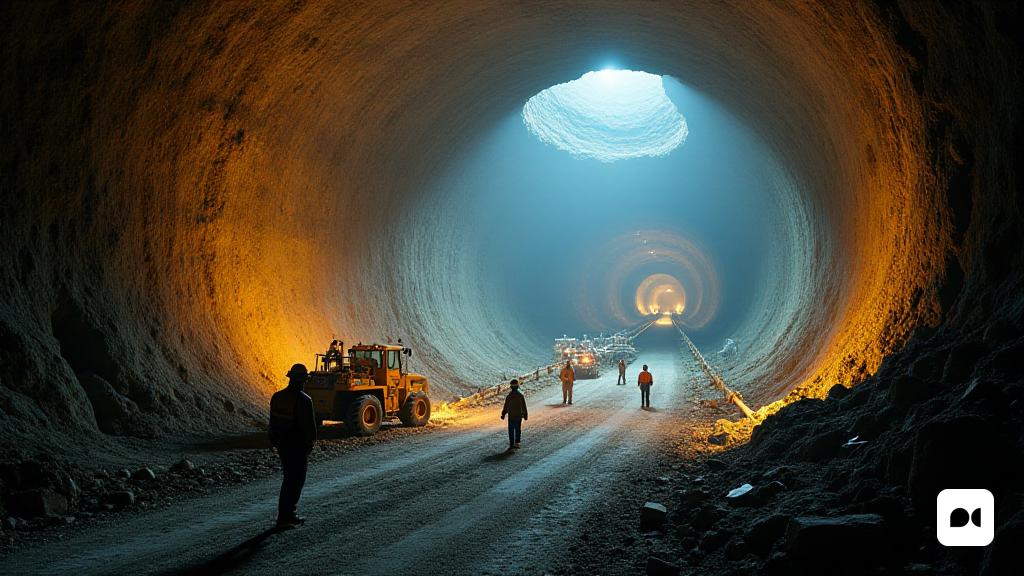In Pursuit of Existence
Deep within the secluded caverns of South Dakota, a collective of dedicated researchers delves into one of humanity’s most profound inquiries: the reason behind the Universe’s existence. This ambitious endeavor, which could redefine our understanding of reality, is being pursued concurrently by a rival team of Japanese scientists, who have gained a head start in this cosmic quest.
The Enigma of Matter and Antimatter
Current astronomical theories are at a loss to explain the creation of celestial bodies and cosmic structures. To address this, both teams are focusing on a mysterious subatomic particle known as the neutrino. They are constructing sophisticated detectors aimed at unraveling the secrets of these elusive particles and their antimatter counterparts.
Deep Underground Neutrino Experiment (DUNE)
The U.S. contingent is anchored in the Deep Underground Neutrino Experiment (DUNE), located 1,500 meters below ground. Here, in monumental caverns that dwarf construction machinery, researchers are ready to embark on the next phase of their groundbreaking project. Dr. Jaret Heise, the project’s science director, describes these expansive chambers as ‘cathedrals of knowledge,’ meticulously designed to insulate from external noise and radiation.
The Nature of Neutrinos
At the dawn of the Universe, matter and its opposite, antimatter, were created in equal measure. The expectation was that these two forms would annihilate each other, leaving behind a void filled with energy. Yet, here we are, made of matter. Scientists believe that the mystery of why matter prevailed lies within the behaviors of neutrinos and anti-neutrinos, which they intend to analyze through high-energy beams fired from Illinois to South Dakota.
Global Collaboration and Competing Visions
DUNE represents a global partnership, uniting 1,400 scientists from thirty nations, including Dr. Kate Shaw from Sussex University. She expresses enthusiasm for the potential revelations that lie ahead, emphasizing the transformative nature of their findings on humanity’s understanding of its own existence.
The Japanese Counterpart: Hyper-Kamiokande
On the other side of the globe, the Japanese team is constructing Hyper-Kamiokande, a grander iteration of their existing neutrino detector, Super-K. Dr. Mark Scott from Imperial College London asserts that their earlier timeline and larger detector could yield crucial insights into the Universe’s origins sooner than DUNE.
A Race Against Time
While both teams are eager to uncover the truth, the simultaneous operation of these experiments promises to enhance our understanding. However, Dr. Linda Cremonesi of Queen Mary University cautions that speed alone may not guarantee a complete picture. Despite the competitive atmosphere, the first significant results from either project are still years away, leaving the ultimate question of our existence tantalizingly unresolved.
Looking Ahead: The Future of Cosmic Discovery
As researchers continue to probe the depths of the Universe, the interplay of neutrinos and their counterparts remains a captivating mystery. This unprecedented collaboration across continents not only highlights the urgency of the scientific endeavor but also reaffirms our collective curiosity about the cosmos. The journey to uncover the fundamental reasons for our existence is just beginning, and its implications could reshape our perception of reality.

